Some Wrinkles Are Preventable
You can`t stop aging, but you can prevent some wrinkles by changing the way you sleep
What Causes Sleep Wrinkles?
Sleep wrinkles are created or reinforced every night while you sleep. The only way to prevent these sleep lines and wrinkles is to reduce contact between your face and your pillow. How to prevent wrinkles while you sleep?
- Sleep on your back
- Sleep on JuveRest® The Sleep Wrinkle Pillow
Sleep on Your Back
Sleeping on your back is the only way to completely avoid the sleep lines and resulting wrinkles that come from facial contact with your pillow. But sleeping on your back can be uncomfortable and make certain issues such as sleep apnea, acid reflux and snoring worse. Plus, sleep patterns can be hard to change. So, even if you fall asleep on your back, chances are you’ll roll over to your side during the night.

On average, people change position 20 times per night.
People spend only 33% of sleep time on their back, 60% on their sides and 7% on their stomach.
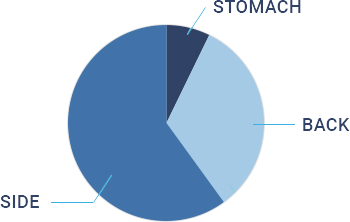 Buy Now
Buy Now
Advantages of Sleeping on Your Back
While there is no single correct sleeping posture, the best sleep postures maintain the natural curvature of the spine, while also reducing facial wrinkles.
The advantages of sleeping on your back (supine position) include stability, minimal spine rotation, reduced facial compression, optimal weight distribution, and optimal spinal unloading.1 The disadvantage to sleeping on your back is that it can be uncomfortable for those with some types of back pain and can worsen sleep apnea, snoring and acid reflux (GERD).
Neck Alignment in Back Sleeping

NECK IN NEUTRAL ALIGNMENT
Neck Supported with Normal Cervical Curvature
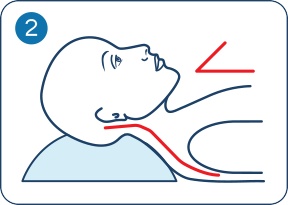
PILLOW TOO HIGH
Loss of Normal Cervical Curvature

PILLOW TOO LOW
Exaggerates Cervical Curvature
Advantages of Sleeping on Your Side
Sleeping on your side (lateral position) is the most common sleep position. Side sleeping can provide excellent spine unloading but only when the neck is properly supported. The optimal head pillow should support the natural curvature and prevent rotation of the spine. A pillow that is too high will angle your neck upward and a pillow that is too low will angle your neck downward.
Neck Alignment in Side Sleeping
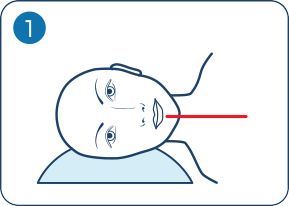
NECK IN NEUTRAL ALIGNMENT
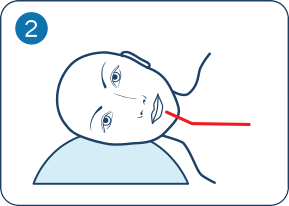
PILLOW TOO HIGH
Angles Neck Upward
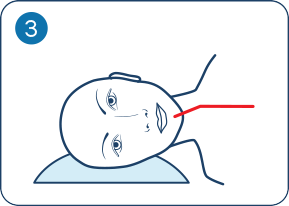
PILLOW TOO LOW
Angles Neck Downward
Does Sleeping on Your Side Cause Wrinkles?
Side sleeping (lateral position) can provide excellent spine unloading but only when the neck is properly supported. The optimal head pillow should support the natural curvature and prevent rotation of the spine. A pillow that is too high will angle your neck upward and a pillow that is too low will angle your neck downward.
Sleeping in the side position on a traditional pillow causes facial compression and is discouraged by the American Academy of Dermatology.

Stomach Sleeping Is Not Recommended
Sleeping on your stomach (prone position) is the worst position. It provides poor spine unloading because of increased neck rotation and lumbar curvature. The face is compressed into the pillow creating significant facial distortion (and sleep wrinkles!).
The Best Solution: JuveRest® The Sleep Wrinkle Pillow
The multi-patented design of the JuveRest® pillow encourages comfortable back sleeping and can help you learn to sleep on your back. The JuveRest pillow also offers a powerful solution for side sleepers. In the side position, it minimizes the shear and compression forces on the face that cause sleep lines and discourages unconscious shifting to detrimental stomach sleeping. The neck is supported in natural anatomical position and spinal rotation is minimized. Whether you are a side sleeper or you sleep on your back, you can prevent sleep wrinkles while maintaining a correct sleep posture.
PROPER ANATOMICAL SUPPORT WITH JUVEREST
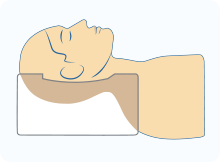
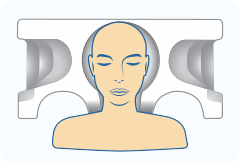
Neutral Alignment in Back Sleeping

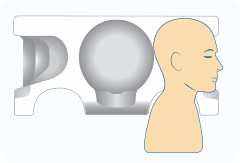
Neutral Alignment in Side Sleeping
The JuveRest pillow protects your face in the back and side sleeping positions while providing comfortable anatomical support needed for a good night’s sleep, every night.